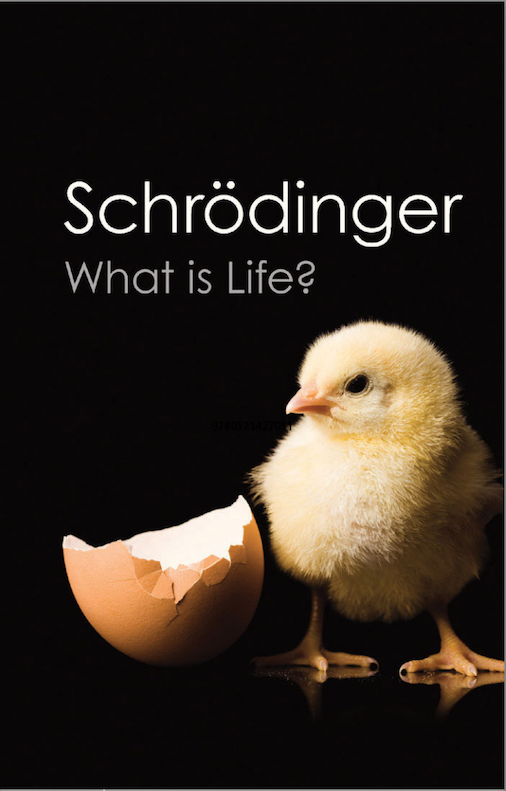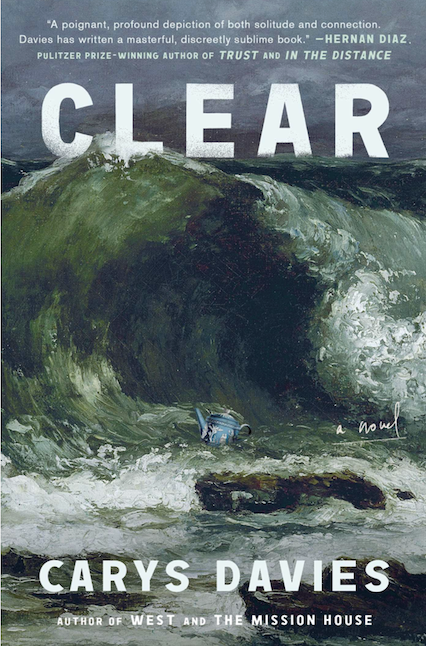We Need No Wings by Ann Dávila Cardinal.
Magical realism delights and surprises in Ann Dávila Cardinal’s unique novel, set in Vermont and Ávila, Spain. Professor Tere Sanchez, a descendant of the family lineage of Santa Teresa de Jesús, comes of age when she is already a woman of a certain age. Tere sojourns in realm of hardship and the realm of spirit. Like her famous ancestor, she will touch the heavens, but come back to earth transformed and wiser. From the very first pages of We Need No Wings, a sense of life’s adventure spurs us on. But it’s last quarter of the book that makes it most worthy of a Cable Street summer read: a series of fantastic twists and turns that resolve into something real, true, and above all, human. The humanity that Dávila Cardinal expresses in her book is itself a kind of magic, and is a welcome antidote to the poisons of cyberspace. The novelist and poet Julia Alvarez gave We Need No Wings a stellar review. We concur. Take We Need No Wings out to the patio this summer—and take flight in its pages.
Far District by Ishion Hutchinson
Ishion Hutchinson, a young Jamaican poet, writes shapely poems that, no matter what the subject, carry the sea, sun, and wind within their phrases. Hutchinson’s poetry has a distinctive, haunting music. The tonality and rhythms move in lyrical counterpoint to poems that tell good stories, bathing us in the sensory qualities of places warm and cold, island and urban. Strong diction and pitch-perfect line breaks complete a unique sonic experience stanza after stanza. So many lines are memorable, but Far District is much more than the sum of its parts. Every technique, each mode of craft, serves beauty, love, the elements, organic life, and the gods who preside over it all. This is timeless book, to own, to read, and to read again.
Thank You for Staying With Me by Bailey Gaylin Moore
Teenage girls and young adult women often lead secret lives; sexual abuse and psychological abuse, booze, and depression stay hidden under required smiles and the Church Youth Fellowship. The no-nonsense essayist Bailey Gaylin Moore exposes it all by holding her own life up to the light. This brilliant, funny, sad, and ultimately triumphant collection of essays gives its bounty to every reader. It will enlighten readers who had no idea it could be so dangerous to be female in this society—especially when family stresses make protection of children that much harder. It will explain things to readers who befriend women that guard their past. And for women who survived the trauma and keep the secret, Gaylin Moore’s essays will be a catharsis. This is an important book to read now, as America goes yet another round against women’s rights and dignity.
Father Tectonic by Robert Frede Kenter
Robert Frede Kenter’s Father Tectonic is a limited-edition, handmade book of poetry, papered and stitched with care by bookbinder Sarah Lefsyk. Kenter’s poems feel handmade, too. They are careful, tender, spare, and infused with feeling. The twenty-five works in this collection revolve around the dynamics of the author’s family of origin—mother, brothers, and, most of all, father, living with modest means but ample complexity. Father Tectonic is one of the best poetry collections we’ve read on the hope, love, confusion, and grief of growing up (and then and living on) as part of a family. It’s a book for a summer’s twilight, with a cold glass and time for memories. (Robert Frede Kenter is a past contributor to Cable Street—click here to read.)
— Dana Delibovi
* * *

What is Life? by Erwin Schrödinger
In his preface to WHAT IS LIFE? The Physical Aspect of the Living Cell, written in 1943, physicist Erwin Schrödinger quotes Baruch Spinoza, 17th century Jewish philosopher who was given the harshest herem —ban or excommunication—ever issued by the then Sefardic community of Amsterdam. (It was never rescinded.) Though never spelled out, his later, written ideas should give us a hint as to why: Spinoza denied the immortality of the soul; rejected the idea of a transcendent, providential God—the God of Abraham, Isaac and Jacob; and claimed that the Law (i.e., the commandments of the Torah and rabbinic legal principles) was neither literally given by God nor any longer binding on Jews. (https://plato.stanford.edu/entries/spinoza/, accessed 9/7/25) On and off, Spinoza worked on his Ethics, amidst other writings and censures; but the latter was not published until 1677, after his death. Here is what, of Spinoza’s Ethics, Schrödinger chose:
There is nothing over which a free man ponders less than death; his wisdom is, to meditate not on death but on life. (Ethics, Pt IV, Prop 67)
In turn, for those who can get the BBC’s back programmes (2013), Physicist Brian Cox presented a series, Wonders of Life . In a stunning first episode, “What is Life?,” in the series he references Schrödinger’s book.
It also seems, to this reader, that Schrödinger’s What is Life?, is a complement to Benjamin Labatut’s book, When We Cease to Understand the World, reviewed herein under Remarkable Reads. From the very beginning, Schrödinger references that conundrum, science versus—well, versus what? art? the humanities? religion? For, he poses the question, “How can the events in space and time which take place within the spatial boundary of a living organism be accounted for by physics and chemistry?” (3)
And we’re off! Mind, DNA, that genetic code, if you will, that carries life and its reproductive capacity—that DNA was first identified in 1869 by a chemist, Friedrich Miescher. However, its structure was then genuinely was explained much more fully in 1953 by James Watson and Francis Crick. To the above-mentioned Brian Cox, DNA is the key to his question of what life is in relation to the enormity of the universe.
Schrödinger’s book is less than 200 pages, published by Canto and also available in ebook format. It is written—and translated—into clear language for those of us who are not scientists (let alone physicists!) but in no way does the author talk down to his readers. Mind, this was written in 1943, before many of the discoveries of our own era, but it is still both relevant and a fascinating text.
CLEAR by Carys Davies
Clear, by Welsh writer Carys Davies, might seems an oddly simple, almost stark, book to some readers. Set in Scotland, historically it rests upon two rather stark assaults on community perpetuated by powerful landlords on the British Isles. One is the Enclosure Movement (16th to 18th centuries) which ended any notion of communal lands available in favor of larger, fenced in and privately owned lands and which displaced those humbler folk with smaller plots, acreages, and their stock. It left many impoverished. Second was specific to Scotland, the Highland Clearances[1]
Like the Enclosure Movement, the Clearances had a similar impact upon the more humble: “the forced eviction of Gaelic-speaking communities from the Scottish Highlands and Islands, starting in the late 18th century and continuing into the mid-19th century.” (accessed 8/6/25) To put it more precisely, from roughly 1750 to 1860, open fields were enclosed, much like what happened via the earlier Enclosure Movement, farms were consolidated, inhabitants evicted (often brutally) from their land and, in the case of the Clearances, replaced with sheep.
I might add yet another aspect of history, the parting of ways in the Scottish Presbyterian church: one group churched, established and under the patronage of landowners, and the break-away faction of evangelical ministers who separated to form the Free Church of Scotland. Not that the book diverges into religious themes—rather, this is yet another detail in painting a fuller picture of the time. Though one of the two main characters, John Ferguson, is a Free Church pastor looking to establish a church for some of its followers, he is not doing well and reluctantly takes on a job to clear the last inhabitant from one of the tiny islands near Orkney and Shetland. Upon arriving at the island, he becomes injured and that last inhabitant, not knowing what Ferguson is there for, takes him in.
Further, the book also looks at language—subtly, should you wonder, but bringing to life the ebb and death of a language.[2] In this case the language in question is Norn, now extinct but once spoken in Shetland and Orkney, among other islands nearby. Ferguson struggles to get at least a very basic grasp of so that he can communicate with that last resident, Ivar, whom the former has been sent to “assist” in removing as part of the Clearances.
Mind, the book deals with all these themes most economically, not in any way didactically, and with a simple yet beautiful economy of prose. Lest you should think that is all and most interestingly, Clear and Carys Davies have also won the 2025 Ondaatje prize, a yearly literary award for writing that “best evokes the spirit of a place.”
— Bronwyn Mills
[1] “Scottish Gaelic: Fuadaichean nan Gàididheal,[ˈfuət̪ɪçən nəŋ ˈ ɡɛː.əl̪ˠ], [ˈfuət̪ɪçən/ nəŋ ˈɡɛː.əl̪ˠ],Gàidheal [ˈfuət̪ɪçən nəŋ ˈɡɛː.əl̪ˠ], ˈɡɛː.əl̪ˠ], Gàidheal [ˈfuət̪ɪçən nəŋ ˈɡɛː.əl̪ˠ], the “eviction of the Gaels.” (Wikipedia, accessed 12/6/25)
[2] One language is lost every two weeks, according to UNESCO.
* * *





